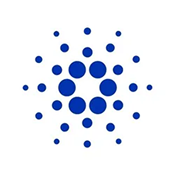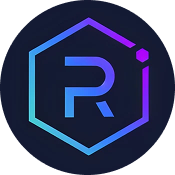When exploring the frontier of blockchain technology, few comparisons reveal as much about the future of finance and decentralized applications as the juxtaposition of Yearn Finance and Cardano. While Yearn epitomizes the automation of yield farming within the DeFi landscape, Cardano stands as a testament to scalable, layered blockchain architecture designed for the next generation of smart contracts and dApps. Both platforms have carved unique niches—Yearn optimizing returns through complex strategies, and Cardano emphasizing security and sustainability through scientific rigor—yet their core philosophies present compelling distinctions worth dissecting for investors and enthusiasts alike.
Short on time? Jump to Yearn Finance vs Cardano Comparison
Understanding Yearn Finance and Cardano ?
Yearn.Finance, launched in 2020 by Andre Cronje, is a decentralized finance (DeFi) aggregator built on Ethereum, designed to optimize yield farming through automated strategies and vaults. It consolidates various protocols like Aave, Compound, and Curve, enabling users to maximize returns without manual intervention. Its native token YFI empowers governance, allowing the community to influence platform evolution. Meanwhile, Cardano, established in 2017 by Ethereum co-founder Charles Hoskinson, is a layered blockchain platform that utilizes the Ouroboros proof-of-stake consensus. Its architecture separates transaction settlement from smart contract execution, fostering scalability and security. Cardano aims to facilitate a broad ecosystem of decentralized applications, with a focus on sustainability, formal verification, and real-world adoption, including partnerships with governments and enterprises.
Yearn’s primary function revolves around yield optimization—automatically reallocating funds across DeFi protocols to seek the highest returns—thus simplifying complex strategies for investors. Its innovative vault system, evolving into YearnV3, emphasizes modularity, security, and decentralization, allowing permissionless strategy creation and broad strategy support. Conversely, Cardano emphasizes building a robust, scalable, and sustainable blockchain infrastructure capable of supporting diverse decentralized applications. Its unique layered architecture enables upgrades and innovations without compromising security, making it suitable for enterprise-level solutions and government collaborations. Both platforms exemplify different facets of blockchain evolution: Yearn as a DeFi yield aggregator, and Cardano as a foundational blockchain for decentralized ecosystems.
While Yearn is heavily focused on optimizing yield through automated farming and strategy diversification, Cardano prioritizes secure, scalable smart contract development with formal methods and layered design. Yearn’s ecosystem is driven by community governance and continuous innovation in yield strategies, whereas Cardano’s approach is rooted in scientific research, peer-reviewed protocols, and strategic partnerships. Their respective architectures and use cases reflect their core objectives: DeFi profit maximization versus blockchain scalability and sustainability. Understanding these distinctions provides investors with insights into how each platform can complement different investment and development goals within the blockchain sphere.
Both platforms continue to evolve—Yearn through protocol upgrades like YearnV3, emphasizing modularity and decentralization, and Cardano through ongoing network enhancements, sidechains, and enterprise integrations. Their development trajectories highlight the broader trends in blockchain technology: automation and yield optimization in DeFi, alongside robust, layered infrastructure capable of supporting complex decentralized applications. As the ecosystem matures, these platforms exemplify the diverse directions blockchain innovation can take—either by maximizing financial returns or by providing a secure backbone for decentralized services.
Key Differences Between Yearn Finance and Cardano
Primary Function and Use Case
- Yearn Finance: Yearn.Finance is primarily a yield aggregator in the DeFi space, automating the process of finding and deploying funds into the most profitable protocols. It simplifies yield farming for users by dynamically reallocating assets across multiple DeFi platforms, driven by sophisticated algorithms designed to maximize returns while managing risk. Its vaults and strategies are tailored for active yield optimization, making it a critical component within the DeFi ecosystem for profit-seeking investors.
- Cardano: Cardano, on the other hand, is a blockchain platform built for broad decentralized application development and enterprise solutions. Its focus is on creating a secure, scalable, and sustainable infrastructure that supports smart contracts, dApps, and complex protocols. Rather than optimizing for financial yields directly, Cardano aims to provide a robust foundation for decentralized innovation, emphasizing formal verification, layered architecture, and real-world adoption, including governmental and institutional partnerships.
Underlying Blockchain Technology
- Yearn Finance: Yearn.Finance operates atop the Ethereum blockchain, leveraging its smart contract capabilities to automate yield strategies. It relies on Ethereum’s network security, gas fees, and existing DeFi infrastructure, making it an integral part of the Ethereum ecosystem. Its architecture involves vaults, strategies, and governance tokens, all functioning within Ethereum’s decentralized environment.
- Cardano: Cardano employs a layered architecture with distinct settlement and computation layers, utilizing the Ouroboros proof-of-stake consensus mechanism. Its design emphasizes formal verification, peer-reviewed protocols, and scalability through sidechains and off-chain computation. Cardano’s architecture is intended to provide a secure, flexible platform capable of supporting diverse decentralized applications and enterprise deployment, independent of a single underlying blockchain like Ethereum.
Governance Model
- Yearn Finance: Yearn’s governance is community-driven through its native YFI token, which holders can stake to propose and vote on protocol upgrades and strategic decisions. The governance process is designed to be decentralized and participatory, with the community actively shaping the platform’s future development and strategies.
- Cardano: Cardano’s governance involves a layered approach with on-chain voting and a treasury system, enabling stakeholders to participate in protocol upgrades and parameter adjustments. Its design promotes decentralization and sustainability, with a focus on peer-reviewed research and formal methods to guide development, making it suitable for large-scale institutional and governmental collaborations.
Security and Scalability
- Yearn Finance: Yearn’s security relies on Ethereum’s established network security, but it has faced challenges such as smart contract exploits, highlighting the importance of continuous audits and security updates. Its scalability depends on Ethereum’s ongoing upgrades, like Layer 2 solutions and sharding, which are critical to handling increased transaction volumes.
- Cardano: Cardano emphasizes security through formal verification and peer-reviewed protocols, aiming for high assurance in its smart contracts and network operations. Its layered architecture enhances scalability by separating transaction settlement from computation, enabling parallel processing and future expansion through sidechains and off-chain solutions. This design supports a high number of transactions per second while maintaining security and decentralization.
Development Approach and Community
- Yearn Finance: Yearn’s development is highly community-driven, with rapid protocol upgrades, innovative strategy deployment, and active governance participation. Its ecosystem often embraces experimental features and integrations, reflecting a dynamic, fast-paced development culture centered around yield optimization.
- Cardano: Cardano’s development is research-driven, with a focus on peer-reviewed scientific methods, formal verification, and strategic partnerships. Its community is dedicated to building a sustainable and scalable blockchain ecosystem, emphasizing long-term stability, enterprise use cases, and global adoption, often involving collaborations with governments and large organizations.
Yearn Finance vs Cardano Comparison
| Feature | ✅ Yearn Finance | ✅ Cardano |
|---|---|---|
| Primary Function | Yield aggregator automating DeFi strategies | Layered infrastructure enabling smart contracts & dApps |
| Underlying Blockchain | Ethereum | Cardano (Ouroboros proof-of-stake) |
| Governance Model | Community voting via YFI tokens | On-chain voting with treasury system |
| Security Approach | Ethereum security, smart contract audits | Formal verification, peer-reviewed protocols |
| Scalability | Dependent on Ethereum upgrades | Layered architecture with sidechains and off-chain solutions |
| Development Philosophy | Fast-paced, community-driven innovation | Research-based, long-term stability focus |
Ideal For
Choose Yearn Finance: Investors seeking high-yield opportunities in DeFi and automated strategies.
Choose Cardano: Developers and enterprises aiming to build scalable, secure decentralized applications.
Conclusion: Yearn Finance vs Cardano
Yearn Finance and Cardano exemplify two distinct yet complementary pathways in blockchain evolution—one driven by decentralized financial optimization, and the other by scalable, secure infrastructure for decentralized applications. Yearn’s agility and focus on maximizing yields through automation make it a powerful tool within the DeFi ecosystem, while Cardano’s layered architecture, scientific rigor, and emphasis on sustainability position it as a foundational platform for enterprise and global solutions.
Choosing between the two depends on individual or organizational goals: those seeking immediate yield and active participation in DeFi should consider Yearn, whereas entities aiming for long-term scalability, security, and broad application development might find Cardano’s ecosystem more aligned with their objectives. Both platforms continue to evolve, promising exciting innovations that could reshape the future of blockchain technology and decentralized finance.






